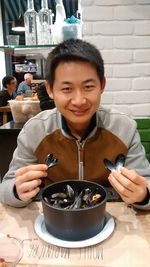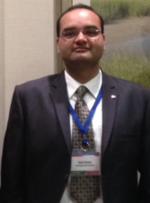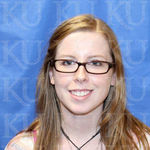People: Difference between revisions
No edit summary |
No edit summary |
||
| Line 55: | Line 55: | ||
==='''Biography'''=== | ==='''Biography'''=== | ||
Dr. Haiyang Chao joined the University of Kansas as an Assistant Professor in August, 2013. He has authored or coauthored one book, two book chapters, and more than thirty peer-reviewed research papers. He is the author of the book "Remote Sensing and Actuation Using Unmanned Vehicles" published by Wiley-IEEE Press (LINK). His papers have been cited for more than 500 times according to Google scholar. Dr. Chao has extensive experiences of designing, programming, and flight testing small unmanned systems for flight control, aviation safety, and remote sensing applications. He has led or participated more than 90 flight test sessions using small subscale aircraft weighing from 4 lbs to 26 lbs. Example flight test topics include close formation flight (5-12 wingspans), optical-flow-aided navigation, low-cost unmanned platform development, fractional order attitude controller, etc. Dr. Chao is one of the key developers of AggieAir, a low-cost, small UAV platform for remote sensing applications. | Dr. Haiyang Chao joined the University of Kansas as an Assistant Professor in August, 2013. He has authored or coauthored one book, two book chapters, and more than thirty peer-reviewed research papers. He is the author of the book "Remote Sensing and Actuation Using Unmanned Vehicles" published by Wiley-IEEE Press [http://www.wiley.com/WileyCDA/WileyTitle/productCd-1118122763.html(LINK)]. His papers have been cited for more than 500 times according to Google scholar. Dr. Chao has extensive experiences of designing, programming, and flight testing small unmanned systems for flight control, aviation safety, and remote sensing applications. He has led or participated more than 90 flight test sessions using small subscale aircraft weighing from 4 lbs to 26 lbs. Example flight test topics include close formation flight (5-12 wingspans), optical-flow-aided navigation, low-cost unmanned platform development, fractional order attitude controller, etc. Dr. Chao is one of the key developers of AggieAir, a low-cost, small UAV platform for remote sensing applications. | ||
=='''Current students'''== | =='''Current students'''== | ||
Revision as of 09:36, 8 July 2015
Researcher Profiles
Faculty

Haiyang Chao
Ph.D. & Assistant Professor
Department of Aerospace Engineering
2130 Learned Hall
The University of Kansas Lawrence, KS, 66045
chaohaiyang@ku.edu
https://sites.google.com/site/haiyangchao/
Biography
Dr. Haiyang Chao joined the University of Kansas as an Assistant Professor in August, 2013. He has authored or coauthored one book, two book chapters, and more than thirty peer-reviewed research papers. He is the author of the book "Remote Sensing and Actuation Using Unmanned Vehicles" published by Wiley-IEEE Press [1]. His papers have been cited for more than 500 times according to Google scholar. Dr. Chao has extensive experiences of designing, programming, and flight testing small unmanned systems for flight control, aviation safety, and remote sensing applications. He has led or participated more than 90 flight test sessions using small subscale aircraft weighing from 4 lbs to 26 lbs. Example flight test topics include close formation flight (5-12 wingspans), optical-flow-aided navigation, low-cost unmanned platform development, fractional order attitude controller, etc. Dr. Chao is one of the key developers of AggieAir, a low-cost, small UAV platform for remote sensing applications.
Current students
Doctoral Students

Pengzhi Tian
Ph.D. student
Department of Aerospace Engineering
pengzhitian@ku.edu
http://pengzhitian.weebly.com/

Shukla Daksh
Ph.D. student
Department of Aerospace Engineering
d052s327@ku.edu
Undergraduate Students

Zorig Bat
Senior
KU Aerospace Engineering
zorigb@gmail.com
Alumni students

Elizabeth S. O'Neil, KU Aerospace Engineering